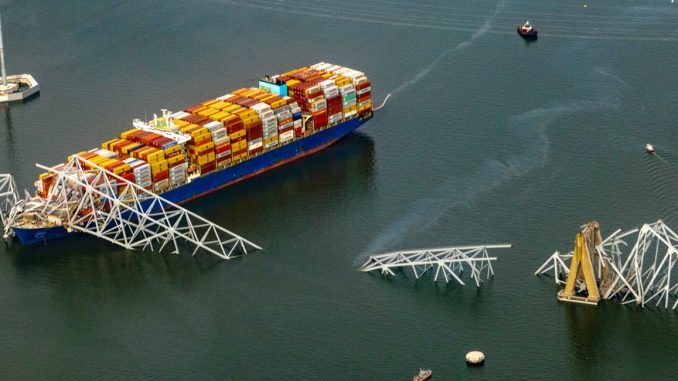
The collapse of the Francis Scott Key Bridge in Baltimore came as quite a shock. After a massive container ship struck one of the bridge’s pillars, the entire span quickly fell apart, costing several lives.
It’s hard to overstate the bridge’s importance, particularly for the automobile industry. In addition to handling 11 million vehicles per year, it provided a vital way for trucks to access the Port of Baltimore while avoiding the dense city core. The impact on the region will be felt for months, if not years.
The question is, what now?
President Joe Biden has said that the federal government would foot the entire bill for rebuilding the bridge and demanded that Congress make it happen.
While the collapse came as a surprise, nobody should be surprised that Biden’s immediate response was to call for more federal spending.
Since taking office, Biden has signed trillions of dollars of spending increases into law and imposed more than $700 billion of additional costs through administrative decisions.
This reckless approach to budgeting has whipped up inflation and driven the gross national debt to $34.6 trillion—about $265,000 for every household in the country.
Fortunately, it’s possible for Washington to help Maryland rebuild the bridge without driving the nation deeper into debt.
First, all officials must be clear that the cost of rebuilding should mostly or entirely fall on the owners and operators of the ship, even if the incident was purely accidental. While litigation on such an important matter could take time to resolve, taxpayers shouldn’t be responsible for the cost of a privately caused disaster.
Second, there’s no need for Congress to authorize new funding to begin the process of clearing the channel and rebuilding the bridge. In 2021, Congress passed a five-year, $1.2 trillion infrastructure package, the largest portion of which is devoted to roads and bridges.
Rather than simply adding to the long-term debt, Congress has many options to repurpose funds from the 2021 bill, including:
- Canceling the administration’s $3.1 billion grant to California’s wildly dysfunctional high-speed rail project.
- Reducing federal spending on programs for low-priority, local-only infrastructure such as hiking trails, bike paths, and sidewalks.
- Pulling forward highway and bridge funds from allocations for 2025 and 2026 so they are available for the project starting in 2024.
Then, if the federal or state government receive payment once litigation is settled, the proceeds could either be used to reduce the federal deficit or put back into infrastructure funds.
Congress and the administration can help reconstruction further by cutting burdensome red tape that adds delays and costs to federally funded projects.
These include mandates on labor, material procurement, shipping, port dredging, environmental reviews, and even “diversity and equity.”
While reforming or eliminating these outdated and ineffective laws would be preferable, a special exemption would be enough for now.
Washington has a longstanding bad habit of responding to every piece of bad news by reaching for Uncle Sam’s credit card. However, with federal finances quickly approaching a point of no return, responsible governance means looking for prudent solutions.
Bottom line: It’s possible to rebuild the bridge without breaking the bank.
©2024 Tribune Content Agency, LLC.
